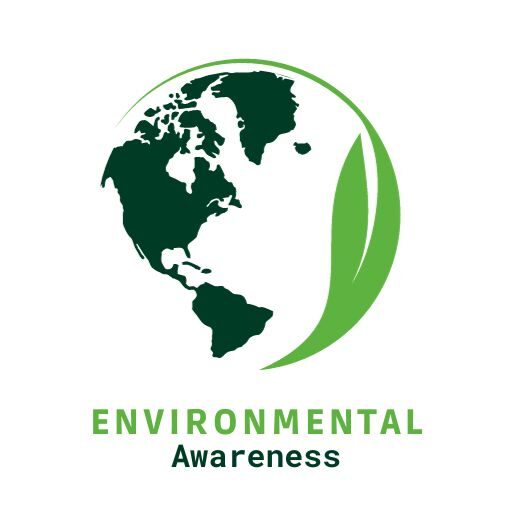
Policy vs. Practice: Bridging the Gap in Climate Change Mitigation and Adaptation
Climate change has become one of the most pressing issues of our time. Extreme weather conditions and climatic changes have resulted in drastic changes in the environment, which mankind is still suffering from. We are facing extreme events like sea levels, making it of paramount importance that appropriate and justifiable actions are needed to counter the effects.
However, while many policies are being formulated on climate change mitigation and adaptation are huge, there are huge differences between what is promised and practised on the realities. This blog aims to showcase the climate mitigation and adaptation policies. The reasons behind the gulf of gap, and how to lessen this gap to address climate change effectively.
Understanding Climate Change Mitigation and Adaptation
Before getting into the core level of the issues, it’s important to acknowledge what climate change mitigation and adaptation. Both terms can be interchanged, but they represent different strategies to manage climate change.
Mitigation: The word mitigation explains the action formulated to lessen the greenhouse gas emissions effects into the environment. Implementing carbon technology, increasing energy efficiency, replanting, and switching to renewable energy sources can help to achieve this. By vanquishing the future climate risk, mitigation essentially tackles the underlying drivers of climate change.
Adaptation: On the other hand, adaptation is preparing for the already inevitable effects of climate change. This includes creating strong infrastructure, creating a disaster preparedness system, or modifying farming methods to adapt to changing weather patterns. The goal of climate change adaptation is to lessen the damage that climate change causes to ecosystems and communities.
Both Climate mitigation and adaptation play are playing integral role in addressing the global climate crisis. Yet, there remains a gulf of difference between the ideologies of the policymakers’ proposal and what happens on the ground reality.
Many climate change policy have been adopted by environmentalists to change the prevailing disastrous threats to the climate. Many aforesaid policies are yet to be implemented by the government agencies regarding the relevant issues.
The Policy-Driven Approach to Climate Change
Many relevant efforts have been on a global scale to formulate policies related to climate change mitigation and adaptation. World leaders are addressing the challenge through the United Nations Framework Convention on Climate Change (UNFCCC), the Paris Agreement, and other nationally relevant active programs. The importance of reducing emissions and becoming ready for the unavoidable effects of climate change is emphasized by this policy framework.
For instance, the Paris agreement, nations resolve to keep global warming well below 2 Celsius over pre-industrial levels. Both climate change mitigation and adaptation are emphasised in the Agreement as being significant. The policies are intended to keep us on the path to a sustainable future, and the aims appear lofty on paper.
Numerous National governments have produced action plans centered on climate change mitigation and adaptation. These include programs to improve climate resilience in communities that are at risk, to lower the carbon footprint, and subsidies for renewable energy projects. It is a collaborative effort to complete the cycle of climate change mitigation and adaptation. Some countries have also taken measures to implement carbon pricing, reforestation measures, and catastrophic action-oriented programs.
Despite the necessity of these policies, there are frequently major obstacles to their implementation.
The Practice Gap: Where Policies Fall Short
Why is there such a significant gap between policy and practice in climate change mitigation and adaptation? The answer is multifaceted, involving political, economic, social, and technological factors.
Lack of Political Will and Commitment
Limited political interest is one of the relevant causes. Despite being discussed in international conventions, Climate measures often face challenges from domestic political stagnation. The government has higher goals to implement them, partially due to political instability, barriers from influential interest groups, or leadership changes.
Even though many nations have ratified international agreements, it may take some time to put these agreements into effect. Leaders might appropriately utilise the financial benefits in the long term. This is particularly true in nations where the fossil fuel industry has a big say in how policies are carved.
Insufficient Funding
There is insufficient funding to reach the targeted policies for climate change mitigation to combat the problem and adaptation, rather than actual practices, even in cases where there are cases of reforestation initiatives, Infrastructural resilience enhancement, and the turn to renewable energy, all come with high upfront expenditure. Due to a lack of resources, developing nations in particular struggle to finance efforts for climate mitigation and adaptation.
A lot of countries rely on foreign funding to help with their climate initiatives. Nevertheless, pledged contributions frequently fail to materialize at the scale required to achieve global climate targets. As a result, the overall impact of climate legislation has decreased, and project completion has been delayed.
Challenges in Coordination and Governance
Strong governance layout is needed, and cross-sector collaboration is needed for effective and efficient climate change mitigation and adaptation programs. Climate policies are not inclusive in the sectoral strategies or plans related to national development. This depicts implementation and causes fragmentation.
For example, the major emissions can be reduced by transforming the transportation, agriculture, energy, and housing sectors. However, these industries frequently operate independently, with little cooperation or connection to climate objectives. Furthermore, local government might not possess the jurisdiction, resources, or expertise to carry out national climate policy. Or the authority to carry out national climate policy despite frequently being on the front line of climate consequences.
Technological and Infrastructural Barriers
However, the technological advancements are crucial to effective climate change mitigation and adaptation. However, the technology required to put these ideas into implementation to address climate change which are unavailable in many nations. If we take renewable energy into consideration. While wind and solar power have technological advancements, they are the prime factor in climate mitigation and adaptation.
Having advanced significantly in rich countries, many developing nations lack the technological knowledge and infrastructure necessary to completely abandon fossil fuels.
Similarly, climate-resilient infrastructure like flood barriers, sea walls, or heat-resistant crops requires technological innovations. Many countries are unable to implement their climate policies if they do not have access to these developments.
Social and Cultural Resistance
In order to entirely implement the climate measures, social acceptance and public awareness are needed. Communities and individuals around the world are averse to change. Effective climate change mitigation is needed, and is often disrupted by cultural norms and economic reliance on conventional ways, whether it be the adoption of sustainable farming methods or the transition to renewable energy.
Communities that depend on large-scale agricultural or coal mining, for instance, can oppose laws intended to lower carbon emissions or alter farming methods. Without support from the community, policies are useless.
You Can Also Read: Refabricating Reforestation Projects Around The World: Restoring The Habitat Setting and Promoting Biodiversity Wellbeing
Bridging the Gap Between Policy and Practice
To truly tackle climate change, the gap between policy and practice must be bridged. Here are several strategies to help close this gap:
Strengthen Political Will
On the international scene, governments need to answer the policies they frame. Encourage strategies for climate change mitigation and adaptation that require strong political leadership. Even in the face of resistance, elected authorities must take appropriate climate-oriented action.
Increase Financial Investment
A massive financial allocation is necessary to close the bridge the gap. In addition to adapting to their climate finance obligations, governments must ensure that money is in the right place for adaptation and mitigation initiatives. Furthermore, as businesses become more aware of the opportunities in the green economy and the threats posed by climate change. There is a divergent partnership that can help in unlocking the additional resources.
Enhance Governance and Coordination
Better governance frameworks are essential for implementing policies successfully. Clear lines of accountability must be established, and coordination across different government levels and sectors must be guaranteed. Local governments ought to be given the authority and resources necessary to carry out community-specific climate plans.
Make Use of Innovation and Technology
It’s crucial to spend money on climate-friendly technology research and development. Governments may increase access to the technological tools required for climate change mitigation and adaptation in both developed and developing countries by giving priority to innovation in climate-smart agriculture, resilient infrastructure, and renewable energy.
It’s imperative to spend money on climate-related technology research and development. The government may increase access to technological tools required for climate change mitigation and adaptation in both developed and developing countries by giving priority to innovation in climate-smart agriculture, resilient infrastructure, and renewable energy.
Promote Public Awareness and Education
Communities must be arranged for climate change mitigation and adaptation to be fruitful. In addition to providing resources and information to assist people and communities in making the shift to sustainable practices, governments should concentrate on increasing public understanding of the significance of taking action against climate change. Increased ownership and support for the climate project can also result from involving the public in the decision process.
Conclusion: The Path Forward
In terms of climate change mitigation and adaptation, there is a genuine but manageable gap between policy and practice. We can close this gap by bolstering political will, boosting financial investment, improving governance, utilizing technology, and encouraging public participation.
The threat posed by climate change is present and immediate. Today is the moment to take action, which entails not only developing bold policies but also making sure that they are implemented in a way that has a real-world impact. Only then will we be able to prepare for the changes that are currently occurring and lessen the worst effects of climate change.





